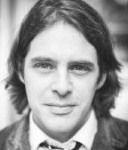This answer will necessarily connect itself to the broader issue of the declining place of Christianity in American life — a subject of evergreen interest, it would seem, especially among Christians. In recent years we have seen Ross Douthat’s Bad Religion: How We Became a Nation of Heretics,Joseph Bottum’s An Anxious Age: The Post-Protestant Ethic and the Spirit of America, and George Marsden’s The Twilight of the American Enlightenment: The 1950s and the Crisis of Liberal Belief.
The lack of prominent, intellectually serious Christian political commentators — familiarly known as the “Where Is Our Reinhold Niebuhr?” problem — has frequently been explored since Niebuhr’s death in 1971. But the disappearance of the Christian intellectual is a more curious story, because it isn’t a story of forced marginalization or public rejection at all. The Christian intellectuals chose to disappear.
It was not wholly elective, of course. W. H. Auden, who throughout the war years had emphasized in both poetry and prose the need for a theologically based understanding of the global conflict, visited the Phi Beta Kappa Society at Harvard in 1946 to read “Under Which Lyre,” a poem celebrating the followers of Hermes (the humanists) in their unequal contest against the minions of Apollo (the technocrats). At the time, the president of Harvard was James Bryant Conant, a chemist who had become captivated by the techno-utopian mood of the era. One of the dominant figures of American intellectual culture, Conant had been the chairman of the National Defense Research Committee during World War II, and as such had overseen the Manhattan Project. (He was present at the first atomic-bomb test at Alamogordo, New Mexico, in July 1945.) His experiences in the war years intensified his determination to transform Harvard from a liberal-arts school into America’s leading institution for the study and promotion of science and technology. “When I was delivering my Phi Beta Kappa poem in Cambridge,” Auden later told his friend Alan Ansen, “I met Conant for about five minutes. ‘This is the real enemy,’ I thought to myself. And I’m sure he had the same impression about me.” But it was clear to Auden which of them had the power to impose his vision on America.
Lewis and Niebuhr got their Time covers soon after that, and the magazine also gave Auden’s book-length The Age of Anxiety a reverent review. But within the decade the cultural scene had shifted dramatically. Niebuhr’s place as reliable sage had given way to a very different authority: the scientist. The exemplary figure here was John von Neumann, a central force behind the development of the first powerful computers and the hydrogen bomb — and the author of the first major paper in game theory, from which today’s behavioral economics descends.
“I have sometimes wondered whether a brain like von Neumann’s does not indicate a species superior to that of man,” Hans Bethe, who would win the Nobel Prize in Physics, told Life magazine on the occasion of von Neumann’s death in 1957. The same article went on to praise von Neumann as being “more than anyone else responsible for the increased use of electronic ‘brains’ in government and industry.” The full title of Life’s encomium is: “Passing of a Great Mind: John von Neumann, a Brilliant, Jovial Mathematician, Was a Prodigious Servant of Science and His Country.”
The emphasis on von Neumann’s service to his country is noteworthy. Writing about the nature of intellectuals as a group, Karl Mannheim had said that any individual intellectual “takes a part in the mass of mutually conflicting tendencies.” The phrasing is inelegant, but the point clear: the social value of the intellectual derives from his or her acknowledgment of multiple, not always harmonious, allegiances, and potentially competing values. During World War II the ability of Christian intellectuals to provide a perspective different from that of governments was precisely why they were valued. There was a general unease during the early Forties about the possibility of “winning the war but losing the peace” — losing the peace by losing the national soul. (The origin of the phrase is unknown, but Niebuhr favored it highly.) In this context, reminders of “eternal values” were often welcome.
All that changed with the arrival of the Cold War, which, in contrast to the complex, shifting alliances and enmities of the World Wars, was simply and bluntly binary. It was the American-led democratic world, Judeo-Christian at its heart, against totalitarian atheist communism, in a battle to the death. (The term “Judeo-Christian” is almost coterminous with the Cold War, and in the American context is closely associated with Will Herberg’s best-selling Protestant–Catholic–Jew, from 1955.) This was not an environment in which the recognition of “mutually conflicting tendencies” was seen as a virtue; and highbrow Christians, like their lower-browed coreligionists, were generally accepting of this worldview.
Those who still held that democracy was not a self-sustaining enterprise tended to make that point subtly and indirectly, as when Auden, in “Vespers,” his great prose poem of 1954, wrote that “without a cement of blood (it must be human, it must be innocent) no secular wall will safely stand.” It is a poem in which the name of Jesus does not appear (“call him Abel, Remus, whom you will, it is one Sin Offering”). Some of the leading religious cultural critics of the World War II period had shifted their emphases, fallen silent, or lost their hold on the public imagination. Auden had become preoccupied with limning the small cultures of friendship and elaborating a poetic theology of the body, largely setting macropolitical questions aside; C. S. Lewis produced far less social criticism in the 1950s than he had in the previous decade, devoting most of his diminishing energies to fiction. T. S. Eliot wrote a handful of plays but otherwise settled into dignified retirement. Niebuhr’s last significant book was probably The Irony of American History, which was published in 1952. For those religious intellectuals who were not inclined to cheerlead for democracy and “Judeo-Christian values,” a certain privatization of religious experience and discourse was the most likely alternative.
And yet another factor: “anti-intellectualism in American life” — as Richard Hofstadter named the tendency in his book of 1963 — had a profound effect on the preparation of church leaders of all denominations in this country. As anti-intellectualism took a greater hold over American life in general, and over Christian life in America in particular, it came to seem almost unnatural for a congregational minister also to be a deeply learned person, an intellectual with an intellectual’s voice.
To be sure, in America the Fifties were a time of public emergence for many Catholic intellectuals, especially writers of fiction: J. F. Powers, Flannery O’Connor, Walker Percy. But these figures were almost assertively apolitical, and when Catholics did write politically, it was largely in order to emphasize the fundamental compatibility of Catholicism with what John Courtney Murray — a Jesuit theologian who was the most prominent Catholic public intellectual of that time — called “the American Proposition.” Murray was not wholly uncritical of the American social order, but his criticisms were framed with great delicacy: in a time of worldwide conflict, he wrote, “there is no element” of that proposition that escapes being “menaced by active negation, and no thrust of the project that does not meet powerful opposition.” Therefore, “America must be more clearly conscious of what it proposes, more articulate in proposing, more purposeful in the realization of the project proposed.” The American idea is in no sense mistaken, though Americans might need to be “more articulate” in stating and defending that idea. This Murray was willing to help us do, by explaining that the Catholic tradition of natural law was the very same principle that the Founding Fathers appealed to when they declared “that all men are created equal [and] are endowed by their Creator with certain unalienable Rights.” It is wholly unaccidental that Murray’s book We Hold These Truths: Catholic Reflections on the American Proposition was published in 1960, when a Roman Catholic named John F. Kennedy was standing as the Democratic Party’s nominee for president of the United States.











